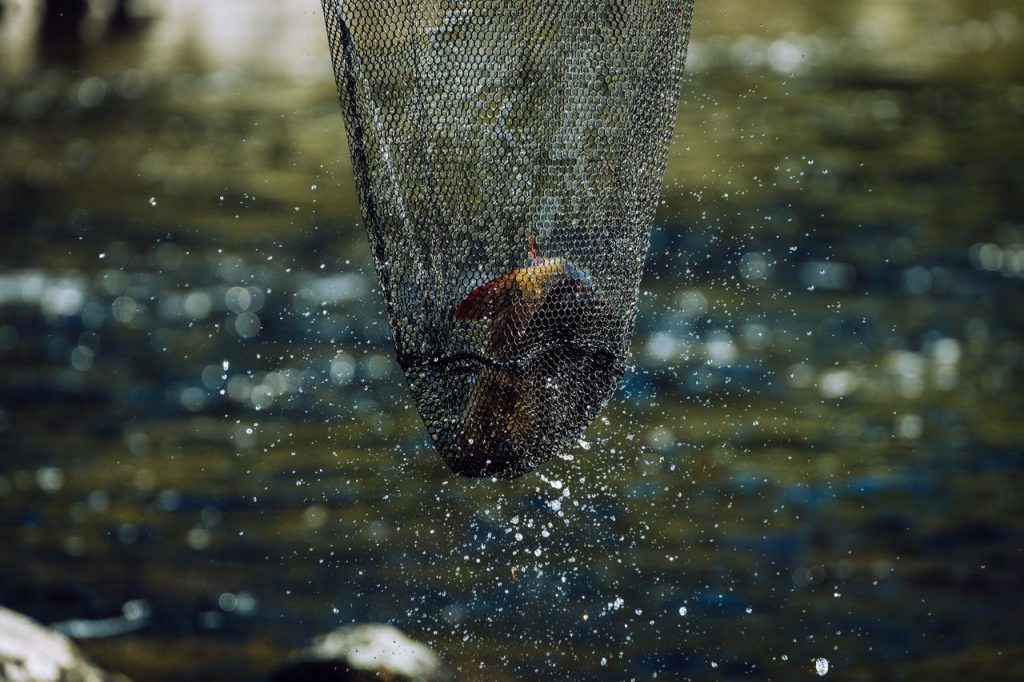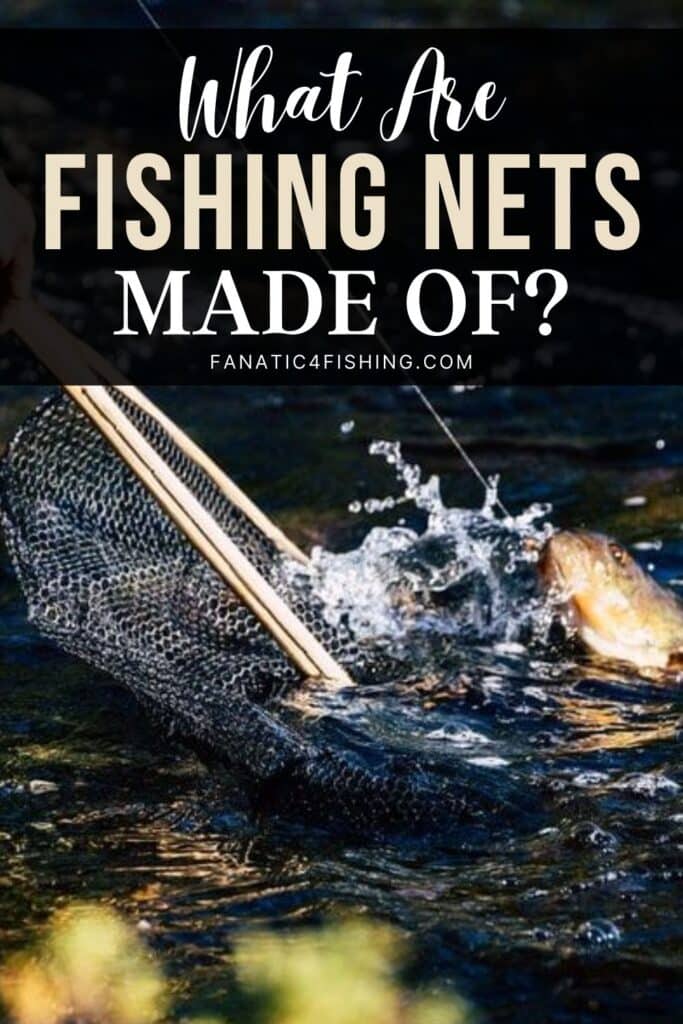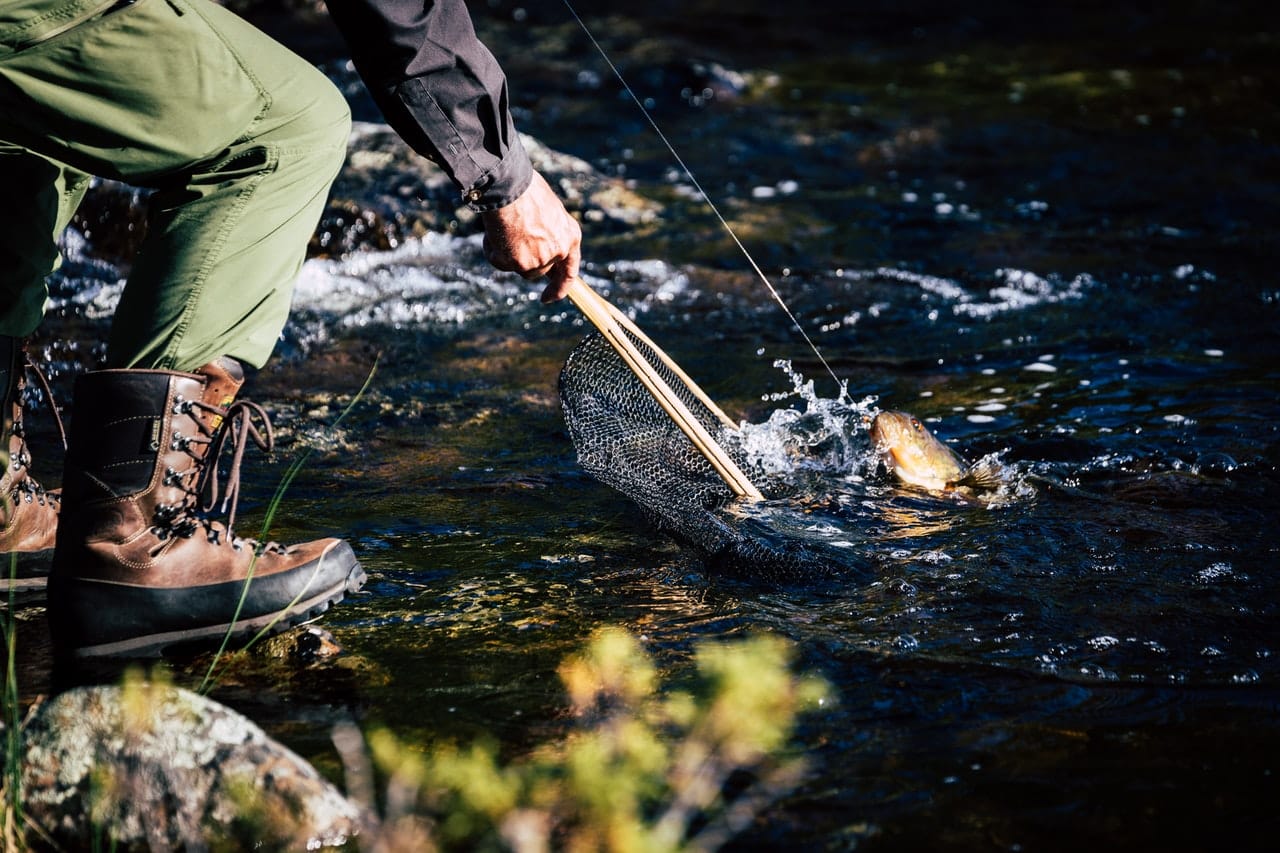When it comes to catching fish in large numbers, nets are a fisherman’s best friend. We humans have been using fishing nets for thousands of years. However, the nets of today look a lot different than what they used to look like back in the day. Now we have a ton of different types all of which are made to serve different purposes. If you are a newbie to the fishing world and are curious to learn about the different types of fishing nets and what they are made of, here is a comprehensive guide that will answer all the questions that you might have.
What are Fishing Nets?
A fishing net is made from fibers woven in a grid-like structure. It is essentially an open fabric that is made of thread, cord, or wire with knotted intersections to form a mesh. Some of these fishing nets are also known as traps as the mesh traps the fish underwater. These fishing nets have been around for a long long time as fish has been an essential part of the human diet since the beginning of time.
History
Nowadays most of the fishing nets that you will find in the market are made from man-made fibers. However, back in the day fishing nets were made from a wide variety of natural materials. The oldest net ever found dated back to 8300 BC and was made using willow. Some of the most commonly used materials to make nets in the past included bark, bast, leaves, roots, and stems. In America, the natives used grass, nettles, and the inner bark of cedar whereas in some other parts of the world animal tissue was also used to make fishing nets like animal hide, hair, intestine, and baleen.
What are fishing nets made of?
Historically different kinds of fishing gear have always been an important part of human life. This is because human civilizations have always depended heavily on fishing to survive. Modern fishing nets are made from man-made fibers as they are very durable. Moreover, they don’t wear out too quickly and last for much longer which is why both commercial and recreational nets are made from these materials.

Although some fishing nets are made from vegetable fibers, they have a much shorter life span because they are much more susceptible to rot and require a lot more maintenance. However, one of the upsides to using these materials is that they are biodegradable.
Here are some of the most commonly used materials to make fishing rods.
Polyester
Polyester is a widely used material to manufacture fishing rods and is used to make all types of fishing nets. These nets are highly hydrophobic and do not degrade very easily. Moreover, they have elastic memory which means they can easily return to their original form after stretching. Another advantage to using polyester nets is that they don’t get tangled up very easily. Which makes them very easy to use, plus they are highly resistant to abrasion.
- Dimension of the Net - 15.8 x 11.8 hoop, 11.8 depth and16.7 inch handle.
- Design to Float - Designed with the wade fisherman in mind, the PLUSINNO floating landing net has foam padding to the hoop and providing buoyancy.
- Rubber Coated Non-snag Net - The rubber coating net is hook/snag free.
Prices pulled from the Amazon Product Advertising API on:
Product prices and availability are accurate as of the date/time indicated and are subject to change. Any price and availability information displayed on [relevant Amazon Site(s), as applicable] at the time of purchase will apply to the purchase of this product.
Polypropylene
Polypropylene fishing nets are very similar to Polyester nets as they are very durable, highly hydrophobic, and lightweight. They are suited to extreme fishing conditions. They don’t absorb too much water, dry up really quickly, and don’t degrade under the sun. Polypropylene fishing nets are quite similar to polyester except for the fact that Polypropylene nets dry up a bit faster, whereas polyester nets are a bit more UV resistant.
- HANDMADE - Durable and copolymer monofilament mesh, easy to throw.
- Zinc Sinkers - Upgrade perforation zinc sinkers design, the high density of zinc sinkers can effectively reduce the splash water. Provide better weight, quick sink and a tight bottom seal prevent bait to escape.
- Dimension - 4 Ft Radius, 3/8 inch mesh accommodates most bait species. Make capturing live bait easy and fun. Provides significant savings in bait cost.
Prices pulled from the Amazon Product Advertising API on:
Product prices and availability are accurate as of the date/time indicated and are subject to change. Any price and availability information displayed on [relevant Amazon Site(s), as applicable] at the time of purchase will apply to the purchase of this product.
Nylon
Nylon is the most widely used material for making fishing nets because it is stronger than both polyester and Polypropylene. The Nylon nets are the preferred choice for most fishermen. Because they are elastic and abrasion-resistant, lightweight, extremely hydrophobic, and much more durable and long-lasting.
- FISHING NET MATERIAL - Durable nylon and corrosion resistant aluminum pole handle resist bending and cracking
- LANDING NET SPECIFICATION - Extend Length max: 39.3 | Handle Length: 23.6| Net Depth: 11.8 |Length of side of the triangle Hoop: 16
- SPECIAL DESIGN - The landing net does not harm fish or scales for safe capture and release - waterproof and non-absorbent coating and will not be heavy
Prices pulled from the Amazon Product Advertising API on:
Product prices and availability are accurate as of the date/time indicated and are subject to change. Any price and availability information displayed on [relevant Amazon Site(s), as applicable] at the time of purchase will apply to the purchase of this product.
Cotton
Cotton fishing nets are no longer used as much as they were back in the day. This is because you can easily get superior durability and performance from man-made fibers. Cotton fishing nets are made from cotton ropes. Made by combining cotton threads and then knotted together into nets. Another reason why cotton nets have gone out of fashion is that they absorb a lot of water which makes them quite heavy and difficult to use.
Flax
Flax is another one of those materials that were used back in the day to make nets and have slowly gone out of fashion. The flax plants are used to make linen which then is used to make fishing nets. Although they are much stronger than cotton nets, they have much less elasticity in comparison. Plus, they aren’t nearly as durable as nets made from man-made fibers. Moreover, they can be a bit expensive. As they need to be treated with tar to give them a longer life.
Hemp
This is a popular vegetable fiber that has been used for making fishing nets for a long time. Hemp nets are much stronger and more durable. However, they absorb a lot of water which makes them really heavy and tough to use. If it weren’t for man-made fibers hemp would have still been one of the most widely used materials to make fishing nets. However, with the introduction of man-made fibers in the market, there is no real reason for people to still use vegetable fibers like hemp to make nets.
What Are Fishing Nets Made Of? – Conclusion
In the modern fishing world, you won’t find a lot of nets made from natural materials. This is because man-made fibers like nylon, polyester, polypropylene, and polyethylene are a lot stronger, much more durable, and way more hydrophobic in nature.
However, the downside to using these materials is that they aren’t as eco-friendly. Traditionally used materials like Cotton, Flax, and hemp and pose a great threat to marine life when lost in the water. With an increasing focus towards becoming more eco-friendly all over the world, scientists are looking for better alternatives for these man-made fibers. However, for the time being, we will have to stick to fishing nets made from man-made fibers.
If you are looking to buy a fishing net for your next fishing trip, above are some options that you should check out.










